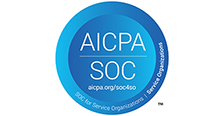
COVID-19
-
08/28/2020
Gyms May Now Open - Sort Of
Client Alert
 Written by: Loren R. Lightman, Esq.
Written by: Loren R. Lightman, Esq.On August 27, 2020, Governor Murphy announced that gyms in the state may open as of September 1, 2020 by way of Executive Order 181. This includes gyms located within clubhouses of common interest communities. It does not mean, however, that community associations can simply take the lock off the gym door and permit use as existed prior to Covid-19. As with pools and other amenities, there are a number of rules that must be satisfied in order for the gyms to open lawfully.
As set forth in the Guidance for Health Clubs/Gyms/Fitness Centers released by the New Jersey Department of Health, these rules are as follows and can be found here.
-
Gyms can only operate at twenty-five percent (25%) of indoor capacity as set by the certificate of occupancy permit that is on record with the municipal building department. This does not include staff, who are required to maintain a 6-foot distance from others. If there is no permitted occupancy limitation on record then the occupancy limit is one person per 125 square feet per person of accessible indoor or outdoor space.
-
Indoor group classes can occur but must be limited to no more than one individual per 200 square feet of distance from other class participants – and all participants must be able to maintain a minimum of 6 feet of distance from other participants during the entire class. This is in addition to capacity restrictions that must be met as stated in #1. Given the restriction of requirements for group classes it may be impracticable for them to be held until the requirements are relaxed at some point in the future.
-
Outdoor group activities are permitted but again, all individuals must maintain a 6-foot distance from other individuals during the entire class. Also, if at any point participants in outdoor classes enter the indoor premises (i.e. clubhouse for any reason, including to use a restroom), they will be counted in the capacity limit in #1. While it may be easier for associations to offer group classes outdoors given capacity limitations, associations will need to still ensure that the indoor capacity limits take into account people who may enter sporadically.
-
One-on-one personal training can occur assuming that 6 feet of distance can be maintained for most of the training session.
-
Importantly for a number of members, individual or pair activities which do not involve contact, specifically mentioned as racket ball and handball, are permitted.
-
Only equipment that can be thoroughly sanitized before and after use by individuals should be permitted. There are extensive cleaning requirements set forth in the Guidance, including frequent cleaning (at least three times daily) of high-touch surfaces such as handrails, doorknobs and restrooms. Disposable wipes must be placed next to each piece of large equipment and all equipment must be sanitized between each use.
-
Activities such as swimming in an indoor pool and other permitted activities remain subject to prior Executive Orders and guidance.
Additionally, and also important, gym users must wear masks or face coverings at all times while inside the gym except when doing so would inhibit the individual’s health. Signs are required at the gym entrances cautioning users that they cannot enter if they have been diagnosed or suspected to have had Covid-19 and are still within the required isolation period as defined by the CDC, if they currently have symptoms of Covid-19 as defined by the CDC or if they have been in close contact with an individual diagnosed with Covid-19 as defined by CDC guidelines. Temperature checks are required for staff and users entering the facility and specific questions are required to be posed to users as they enter the facility. Any individuals who have a temperature of 100.4 or above or who answer yes to any of the questions must be denied access to the gym. Individuals may also enter only through the front door of the facility.
Another requirement is for gyms to have a social distancing plan that sets forth where users can be at a given time in lobbies or waiting areas, private offices and the training area. Gyms/associations must also keep a log of workers and clients, including names and phone numbers, for the purpose of contact tracing in case there is a Covid-19 exposure at the gym.
Overall, allowing for gyms to open may be considered a positive development in the broader sense but, as with pool openings, comes with a new set of obligations, including:
-
The need for staff to monitor entrance to the gym to conduct temperature checks and pose the required questions for those individuals who seek to gain access.
-
The need to contract for additional cleaning services to satisfy the enhanced sanitation requirements.
-
The need to monitor ongoing use and occupancy to ensure that applicable limits are met at all times.
-
The need to institute a system for reservations that ensures fairness and even access to all who seek to use the gym facilities.
-
The need to consult with legal counsel to prepare documents and to ensure that adequate steps are being made to ensure compliance with the Executive Order and the Dept. of Health Guidance.
-
The need to consult with the Association’s insurance professional with respect to potential liability and insurance issues.
While the concept of a gym re-opening may be a welcome development in theory, with all of the restrictions set there will need to be a diligent analysis of the steps needed to do so along with the practical reality of what it will cost in terms of time, money and potential liability exposure to the association. Boards and management professionals are urged to consult with their professionals to determine how best to proceed for their particular situation.
If you have questions about this or any other issues with your community association, please contact one of our community association attorneys.
©2020 Hill Wallack LLP. All rights reserved. Please contact Hill Wallack for permission to reprint. Notice: The purpose of this Client Alert is to identify select developments that may be of interest to readers. The information contained herein is abridged and summarized from various sources, accuracy and completeness of which cannot be assured. This Client Alert should not be construed as legal advice or opinion, and is not a substitute for the advice of counsel.
-


